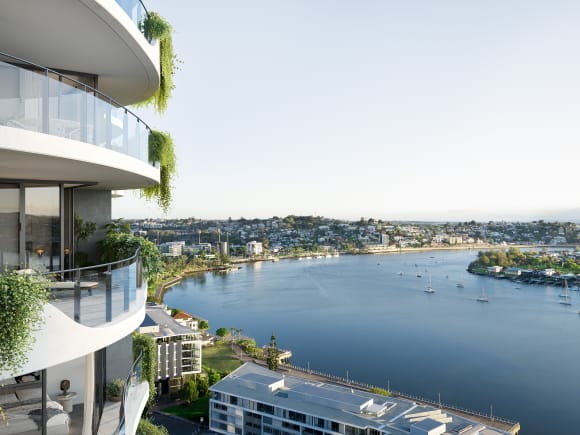For the past 3-4 years, many pundits have forecast that “this year” is the year for Brisbane and the city has not delivered
For the past 3-4 years, many pundits have forecast that “this year” is the year for Brisbane and the city has not delivered. It has chugged along steadily but there’s been little in the way of major uplift.
But now the Brisbane boom is upon us. Hotspotting research for the upcoming Autumn 2021 edition of The Price Predictor Index shows just how strong markets are across the Greater Brisbane Area.
The number of growth markets in the Greater Brisbane Area has quadrupled since mid-2020, creating the strongest market in the six years of our quarterly surveys. The uplift in sales activity in the past six months has been extraordinary.

Our new survey has identified 124 suburbs with rising sales activity, compared to 56 in the previous survey and just 28 in the mid-2020 survey. This means the number of growth suburbs doubled in six months and then doubled again within three months.
The previous best result in the six years of our quarterly surveys was 80 growth suburbs six years ago at the start of 2015.
At the same time, the number of plateau markets is the lowest ever, while the number of declining or danger markets has dropped from 37 eighteen months ago to just five now (we continue to classify some of the inner-city apartment markets as danger markets, with vacancies still high there).
The northern precincts continue to be market leaders in Brisbane. The Brisbane-north precinct and the Moreton Bay Region jointly have 51 growth suburbs, including 31 in the Moreton Bay region, which is a record to any LGA across Australia in the six years of these surveys.
This means that three-quarters of the ranked suburbs in the Moreton Bay Region have rising sales activity, a circumstance that makes strong price highly likely in 2021.
The Brisbane-north precinct, which has 20 growth suburbs, continues to impress as one of the strongest of the city’s sectors.
But the growth momentum is occurring throughout the Brisbane metropolitan area, with Ipswich City in the far south-west an exception.
Logan City in the far south has 17 growth suburbs, providing further evidence of the gathering recovery of markets in this precinct.
Brisbane-south (13), Brisbane-inner (11), Brisbane-easts (12), Brisbane-west (7) and Redland City (8) all have substantial numbers of suburbs with rising trajectories. But Ipswich City, with only five growth suburbs, has yet to feel the positive momentum being felt elsewhere in the Greater Brisbane Area.
It doesn’t surprise, therefore, that Brisbane markets have been performing well on price growth, with three-quarters of suburbs across the metropolitan area recording uplift in their median house prices in 2020.
In the most recent quarter, 76% of suburbs had some level of price growth.
With inner-city apartment markets still struggling with high vacancy rates, growth has been less prolific among the unit markets: 56% of the suburbs with unit markets have had growth in their median unit prices in the past year.
House price growth has been spread across the Brisbane metropolitan area, but the upper end of the market has been leading.
St Lucia in the popular western suburbs has lifted its median house price 36% to $1,525,000, while Yeronga in the inner southern suburbs has grown 38% to $1,045,000. The sough-after inner city suburb of New Farm has increased 20% to $1,750,000, while Highgate Hill is also up 20% to $1,200,000. And the most expensive of the eastern bayside suburbs, Manly, has increased 20% to $945,000.
The housing market in inner Brisbane, in contrast to the apartment market, is generally travelling well. In addition to New Farm and Highgate Hill, West End is up 15%, Woolloongabba 10%, Bardon 8% and Coorparoo 7%.
The western suburbs are doing well, led by St Lucia (36%), Fig Tree Pocket (up 18%), Sherwood (13%) and Toowong (12%). All have median prices above $1 million.
The northern suburbs also are out-performing. Inner northern suburbs with median prices above $1 million are growing, including Grange (14%), Ashgrove (13%), Ascot (8%) and Clayfield (9%).
Further north in the middle-ring suburbs, growth suburbs include Nundah (15%), Banyo (12%), Chermside (14%) and Sandgate (11%), while others like Chermside West, Kedron and MCDOWALL have grown 8-9%. These are places with median house prices in the $600,000 to $800,000 range.
The equivalent suburbs in the south are also displaying solid growth, headed by Holland Park (12%), Tarragindi (10%) and Upper Mount Gravatt (11%). Several others are up 8-9%.
Several outer-ring precincts are also doing well. In the Moreton Bay region in the far north, growth suburbs include Eatons Hill (13%), Caboolture South (8%), Beachmere (9%) and Bellara (7%) – mostly locations with median house prices under $500,000. Given the number of suburbs with rising sales activity, we expect price growth to accelerate in this area.
In Logan City in the far south, Underwood is up 12% to $615,000, while suburbs with medians in the $400,000s and $500,000s are showing solid uplift in the 7-8% range, including Daisy Hill, Loganholme, Shailer Park and Waterford.
Article Source: www.urban.com.au
from Queensland Property Investor https://ift.tt/3aoPXjy
via IFTTT